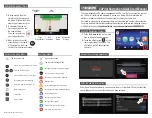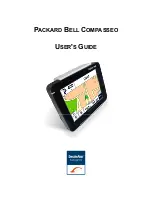ADVANCED USER MANUAL
This advanced manual describes the
advanced functions of the Tracker3, including
auto-revert, mute, software downloading,
Signal Suppression, and Big Picture modes.
The main emphasis is on solving complex
multiple burials.
No two avalanche rescue scenarios are the same.
Throw in more than two buried victims–all close
together–and a search can get complicated, requiring
special searching techniques. While most beacons
on the market come standard with multiple search
functions such as “marking,” these are not 100%
reliable, due to a phenomenon called “signal overlap”
(see www.backcountryaccess.com/research).
Therefore, it is important for rescuers to be well trained
in more than one method for solving multiple burials.
With any transceiver, a searcher may need to utilize
special multiple search techniques to rescue the
victims, especially if there are more than two victims
within range.
It’s important to note that most multiple burials can
be approached as a series of single burials, solved
either “in series” or “in parallel” using normal search
mode. The only time multiple burials can become
truly complex is when the victims are in close
proximity (≤ 10 m) to each other.
In general, we recommend using Signal Suppression
for all scenarios involving only two victims. When
more than two victims are buried, then special
techniques might be necessary–especially if some of
the victims are in close proximity.
Remember: it’s fun to go out and practice multiple
burial searching, and we encourage you to master it!
But manpower, group organization, and excavation
efficiency play equally important roles in real-life
avalanche rescues.
AUto REVERt MoDE
Auto revert mode will make your Tracker3
automatically revert to TR (transmit) mode if the
device does not move for one minute–or if there is
movement, but the searcher remains in search mode
for more than five minutes. An alarm will sound 30
seconds before the unit returns to transmit mode.
During this period, reverting to transmit can be
avoided by pressing the Options button or moving
the mode switch before the 30-second warning
period has elapsed.
Auto revert mode is activated by holding
down the Options button while turning
on the device, in either transmit or search
mode. You must continue to hold down the
Options button until “Ar” is shown on the
display.
Auto revert must be activated every time the unit is
turned on. Otherwise, the unit can only be switched
from search to transmit mode manually.
MUtiNg thE SoUND
The sound in Search mode can be muted
by pressing the Options button while
switching from transmit to search mode.
“LO” text will appear in the display and
most sounds will be muted. Alternatively,
the sounds can be muted by covering the
loud speaker.


















